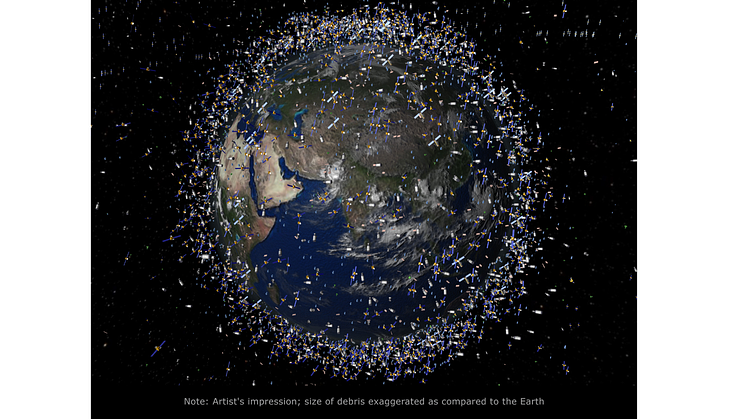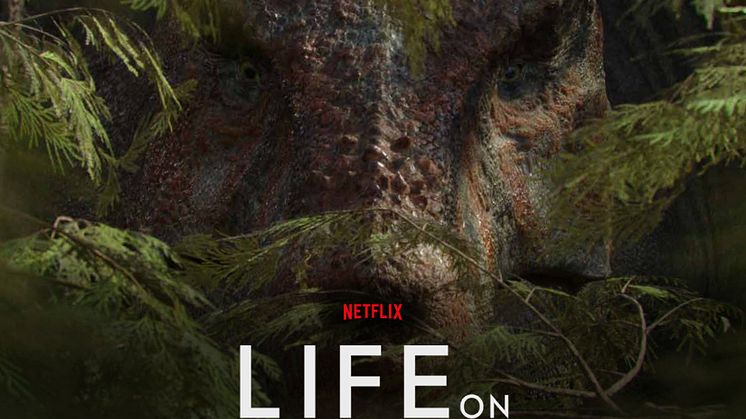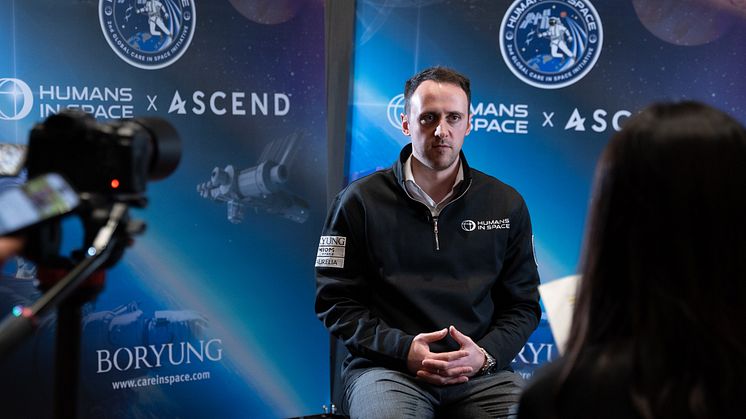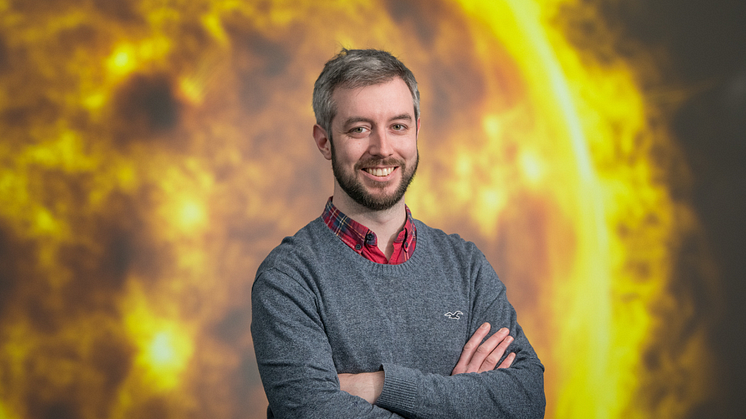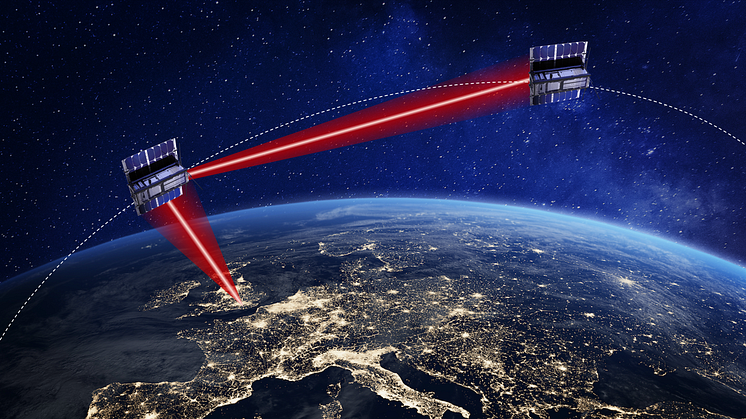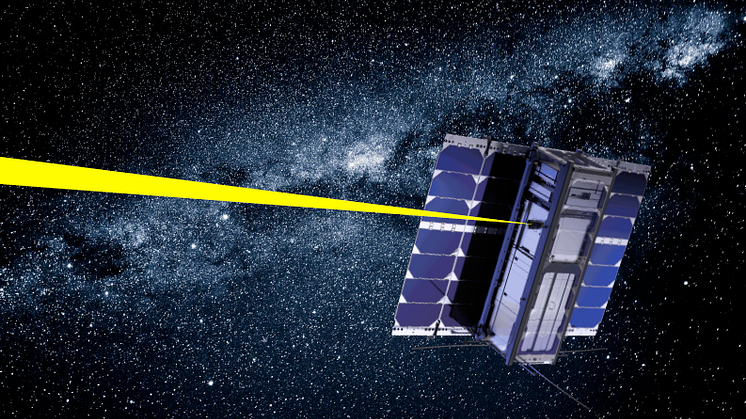
Press release -
Satellite swarm to provide ‘missing link’ between space weather and space debris
Satellite technology developed by Northumbria University scientists has been adapted for a new, European Space Agency (ESA) funded mission, which will see a “swarm” of satellites sent into space to address the growing threat of space debris.
News of the project comes after the US government recently issued its first ever fine to a company for leaving space junk orbiting the Earth.
Space debris poses a huge problem for global communication systems and space exploration efforts. Now, the University of Warwick-led ‘Revealing the Orbital and Atmospheric Responses to Solar activity’ (ROARS) project, aims to tackle the problem with a “swarm” of satellites.
By distributing scientific instruments across multiple smaller inter-linked spacecraft, a “swarm” will possess observational capabilities far in excess of a standard, large satellite.
The mission idea has led to a 26 institution-strong consortium from across nine countries, with a core team leading the study from Northumbria, Warwick, Birmingham, Bath, UCL, Stuttgart, Imperial and Calgary universities, alongside industrial partner, OpenCosmos, the National Centre for Atmospheric Research, USA, the Space Research Institute, Austria, and Southwest Research Institute in the USA.
The team are examining how the swarm of small satellites known as CubeSats, which are about the size of a microwave, can fly in Low Earth Orbit (LEO), just 500 km above the Earth, a region home to exponentially growing satellite mega-constellations. They hope the swarm can provide a “missing” set of measurements necessary to accurately predict and prevent satellite and debris collisions.
Northumbria University is a leading centre for CubeSat research and earlier this year was awarded £5 million from the UK Space Agency to develop a new laser-based CubeSat system, which has the potential to transform the satellite communications industry.
The system being designed for that project will also be used in the laser ranging system of the ROARS CubeSat – providing an alternative use for this innovative technology.
The Northumbria University CubeSat team is led by solar physicist Professor Eamon Scullion. Speaking about ROARS, he said: “The Northumbria laser communications instrument forms a critical part of the payload of ROARS, enabling unique space science measurements, through coordinating the relative positions of the satellites in its laser ranging camp ability, with millimetre precision. This is a great example of the many different functionalities of this technology, and we’re excited about its future potential.”
The multiple satellites feature a dizzying array of new technologies. These include the latest atmospheric and magnetic field sensors, state-of-the art global navigation satellite systems (including GPS) and inter-satellite laser communications. A further integral mission component is ground radar, laser and optical observations, including from University of Warwick’s SuperWASP observatory on La Palma, Canary Islands.
The team will investigate how satellite drag from the Earth’s upper atmosphere; a force on near-Earth orbiting satellites, is modulated by solar activity and space weather. When solar storms interact with the Earth’s magnetic field they are responsible for the impressive Northern and Southern Lights (Aurora Borealis and Aurora Australis), but they can also heat our upper atmosphere and play havoc with spacecraft trajectories.
In February 2022, 40 Starlink satellites were lost, due to the effects of successive solar storms which caused a large atmospheric expansion and increased atmospheric drag, and ultimately caused the satellites to burn up in the upper atmosphere.
Dr Ravindra Desai, of University of Warwick’s Centre for Fusion, Space & Astrophysics and Principal Investigator of the mission, said: “This mission concept seeks to comprehensively understand how space weather deposits energy into our upper atmosphere, and how this threatens the satellites we increasingly depend upon for our day-to-day lives.
“We hope this will provide a step change in our ability to safely use our space environment and enable ESA’s Terrae Novae vision to provide Low Earth Orbit as a safe haven for further exploration of the moon and Mars.”
A further important factor in the swarm design is the ability for collision avoidance manoeuvres and safe deorbit within five years at the end of life. This is important so that the swarm itself doesn’t contribute to the very problem it is trying to address.
ESA released the £86 million (€100 million) campaign for Innovative Mission Concepts Enabled by Swarms of CubeSats at the start of this year and received 74 submissions, from which seven were competitively selected for Phase 0 funding to develop their concepts towards a flight opportunity.
You can read the European Space Agency press releases here: ESA - Seven ways to use a CubeSat swarm and CubeSats for improving space safety
Find out more about Solar and Space Physics research at Northumbria University.
Topics
Categories
UNIVERSITY OF THE YEAR 2022 (Times Higher Education Awards)
Northumbria is a research-intensive university that unlocks potential for all, changing lives regionally, nationally and internationally. Find out more about us at www.northumbria.ac.uk
--- Please contact media.communications@northumbria.ac.uk with any media enquiries or interview requests ---







